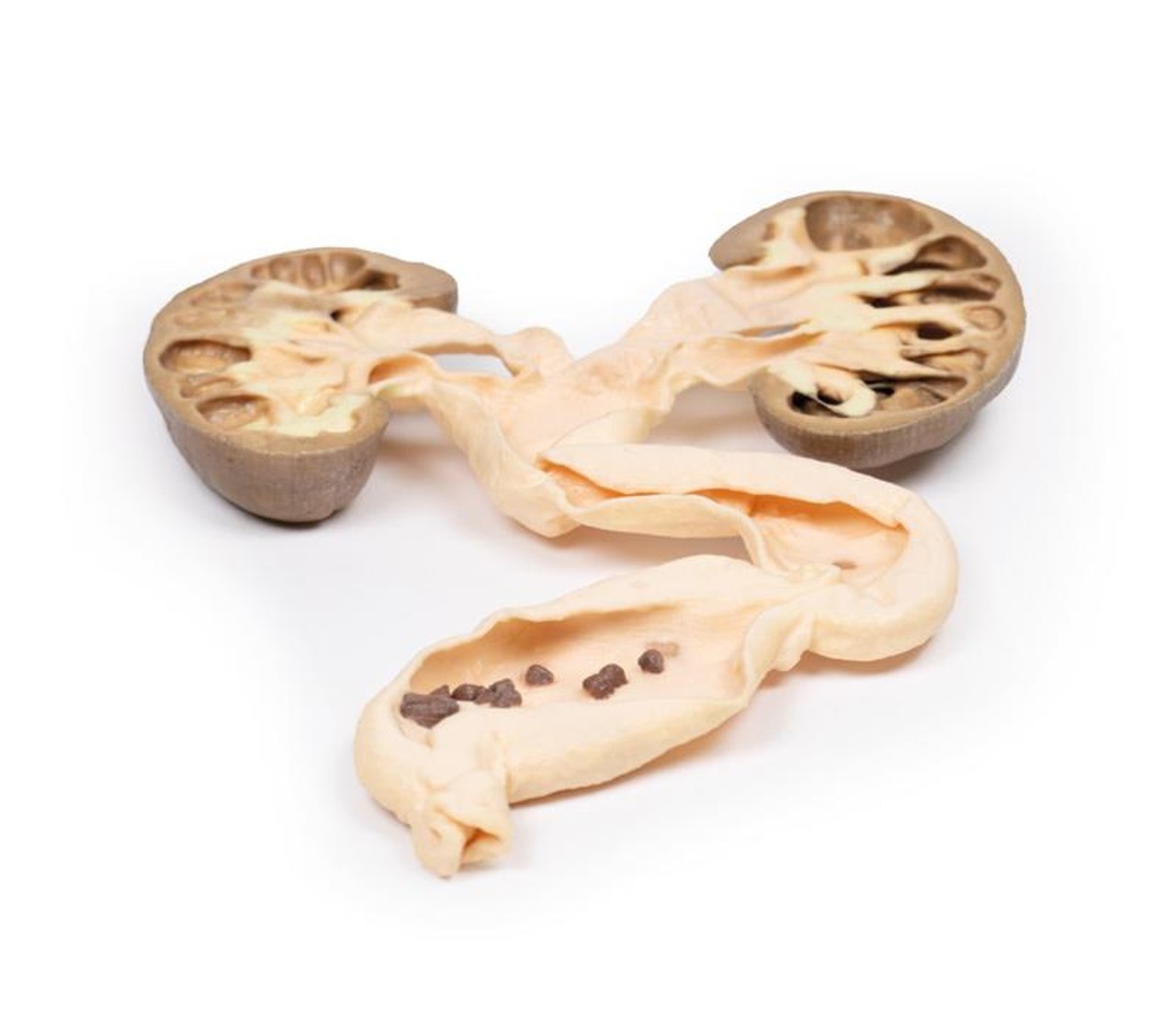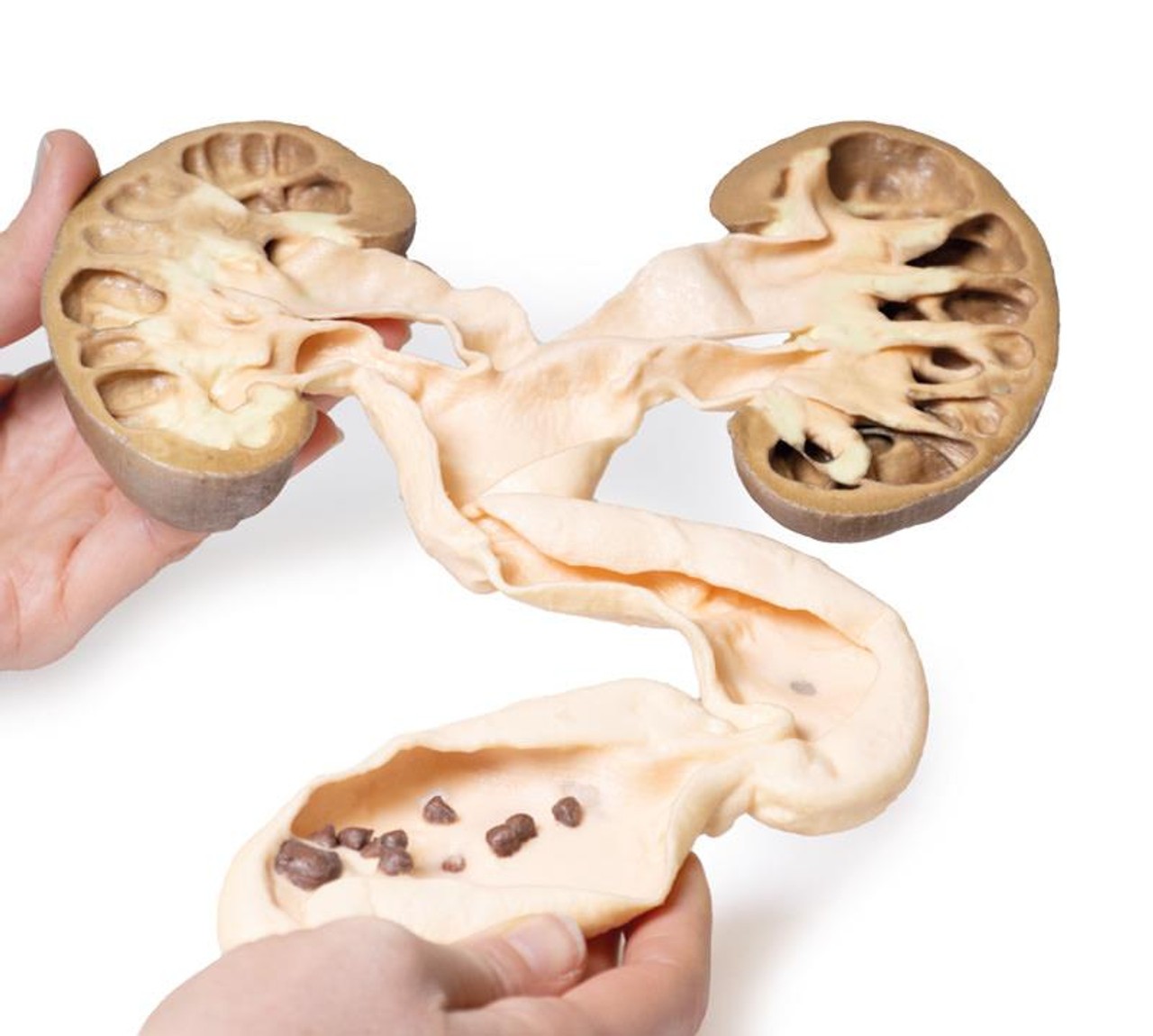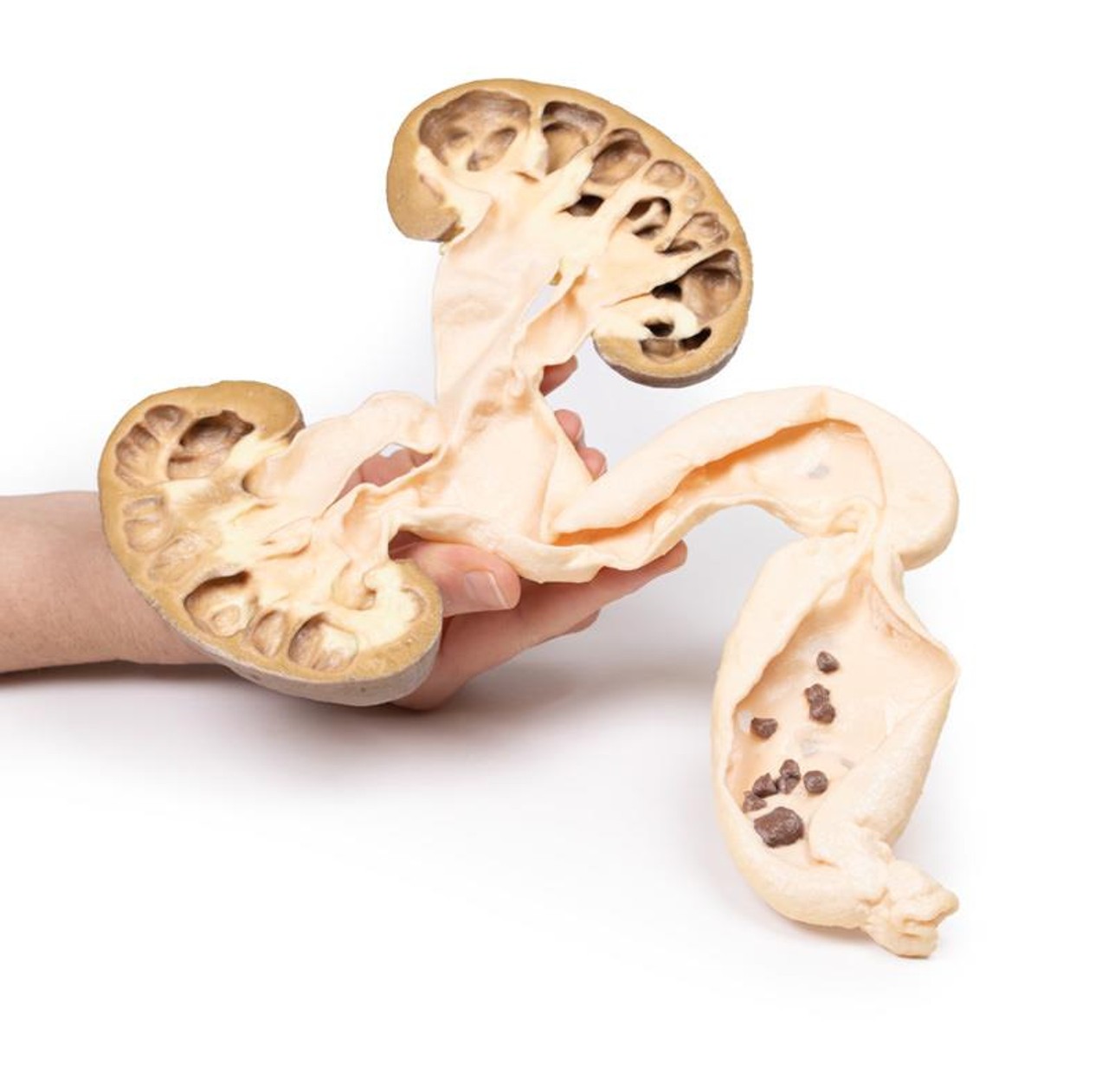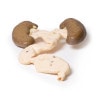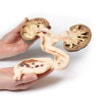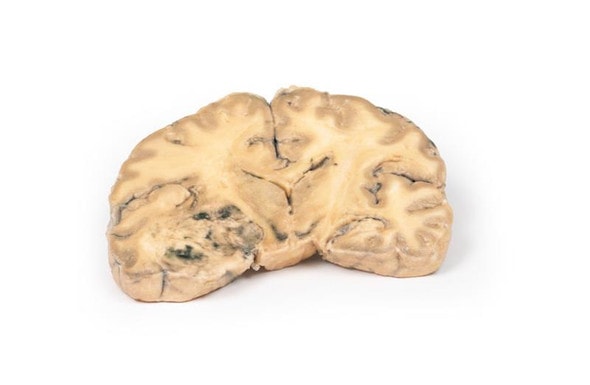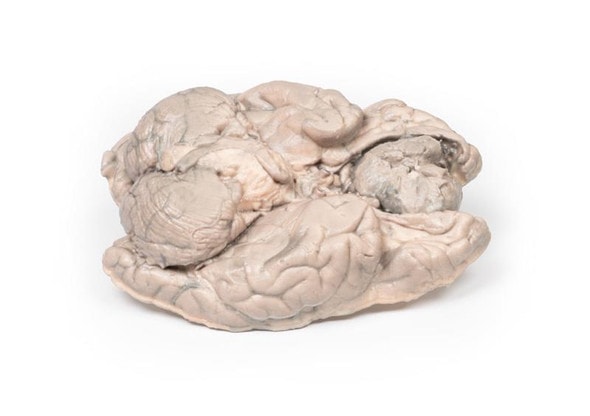Description
Developed from real patient case study specimens, the 3D printed anatomy model pathology series introduces an unmatched level of realism in human anatomy models. Each 3D printed anatomy model is a high-fidelity replica of a human cadaveric specimen, focusing on the key morbidity presentations that led to the deceasement of the patient. With advances in 3D printing materials and techniques, these stories can come to life in an ethical, consistently reproduceable, and easy to handle format. Ideal for the most advanced anatomical and pathological study, and backed by authentic case study details, students, instructors, and experts alike will discover a new level of anatomical study with the 3D printed anatomy model pathology series.
Clinical History
A 49-year old male presents with a 6-week history of malaise, urinary frequency and hematuria for 6 weeks. Further questioning revealed intermittent left flank pain. Abdominal ultrasound showed severe hydronephrosis and hydroureter, secondary to multiple obstructing ureteric calculi at the uretero-vesical junction. He underwent a left nephrectomy and ureterectomy, and made a successful recovery.
Pathology
This is the patient's left nephrectomy and ureterectomy specimen. The kidney has been bisected and the cut surface of both halves is displayed, mounted in continuity with the ureter, which has been opened. The kidney is grossly hydronephrotic, and there is considerable atrophic thinning and loss of renal parenchymal tissue. The ureter is extremely dilated and distally contains a number of small brown-black calculi with irregular sharp surface projections. These are calcium oxalate stones.
This is an example of hydronephrosis and hydroureter due to calculi obstructing the lower end of the ureter.
Further Information
Hydronephrosis, or obstructive uropathy, is the dilation of the renal pelvis and calyces caused by an obstruction in the urine outflow. Obstruction can occur at any point in the urinary tract. Any lesion-, intrinsic (within the outflow system) or extrinsic (out with the ureter)-, that impedes the flow of urine can lead to hydronephrosis. Common causes include: congenital anomalies, urinary calculi, urinary tract tumors, urinary tract inflammation, prostatic hypertrophy, and prostate tumors. Symptoms of the hydronephrosis relate to the pathology causing the obstruction (e.g. renal colic pain with calculi), the time period of the obstruction (acute or chronic), the site (unilateral or bilateral) and whether it is complete or partial.
If the obstruction is not relieved it will ultimately cause pressure to build up proximal to the obstruction. This pressure is transmitted in a retrograde manner through the collecting ducts to the cortex causing progressive atrophy of the kidney with dilatation of the renal calyces and pelvis. The pressure also compresses the vasculature in the medulla leading to ischemic medullary damage. Glomerular filtration persists in the affected kidney until late in the disease process when the filtration gradually diminishes or ceases. Obstruction triggers an interstitial inflammatory process leading to fibrosis. Ultrasound is the key diagnostic tool for diagnosis followed by CT or urogram. Most obstructing lesions require surgical intervention to relieve the blockage. Surgical interventions depend on each individual cause, but include nephrostomy or stenting for upper urinary tract obstruction and urinary catheter or suprapubic catheter insertions for lower urinary tract obstructions.
Advantages of 3D Printed Anatomical Models
- 3D printed anatomical models are the most anatomically accurate examples of human anatomy because they are based on real human specimens.
- Avoid the ethical complications and complex handling, storage, and documentation requirements with 3D printed models when compared to human cadaveric specimens.
- 3D printed anatomy models are far less expensive than real human cadaveric specimens.
- Reproducibility and consistency allow for standardization of education and faster availability of models when you need them.
- Customization options are available for specific applications or educational needs. Enlargement, highlighting of specific anatomical structures, cutaway views, and more are just some of the customizations available.
Disadvantages of Human Cadavers
- Access to cadavers can be problematic and ethical complications are hard to avoid. Many countries cannot access cadavers for cultural and religious reasons.
- Human cadavers are costly to procure and require expensive storage facilities and dedicated staff to maintain them. Maintenance of the facility alone is costly.
- The cost to develop a cadaver lab or plastination technique is extremely high. Those funds could purchase hundreds of easy to handle, realistic 3D printed anatomical replicas.
- Wet specimens cannot be used in uncertified labs. Certification is expensive and time-consuming.
- Exposure to preservation fluids and chemicals is known to cause long-term health problems for lab workers and students. 3D printed anatomical replicas are safe to handle without any special equipment.
- Lack of reuse and reproducibility. If a dissection mistake is made, a new specimen has to be used and students have to start all over again.
Disadvantages of Plastinated Specimens
- Like real human cadaveric specimens, plastinated models are extremely expensive.
- Plastinated specimens still require real human samples and pose the same ethical issues as real human cadavers.
- The plastination process is extensive and takes months or longer to complete. 3D printed human anatomical models are available in a fraction of the time.
- Plastinated models, like human cadavers, are one of a kind and can only showcase one presentation of human anatomy.
Advanced 3D Printing Techniques for Superior Results
- Vibrant color offering with 10 million colors
- UV-curable inkjet printing
- High quality 3D printing that can create products that are delicate, extremely precise, and incredibly realistic
- To improve durability of fragile, thin, and delicate arteries, veins or vessels, a clear support material is printed in key areas. This makes the models robust so they can be handled by students easily.

